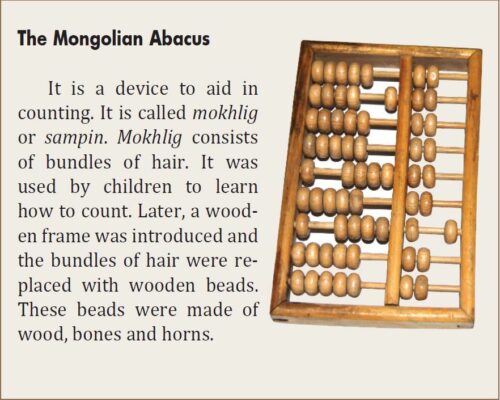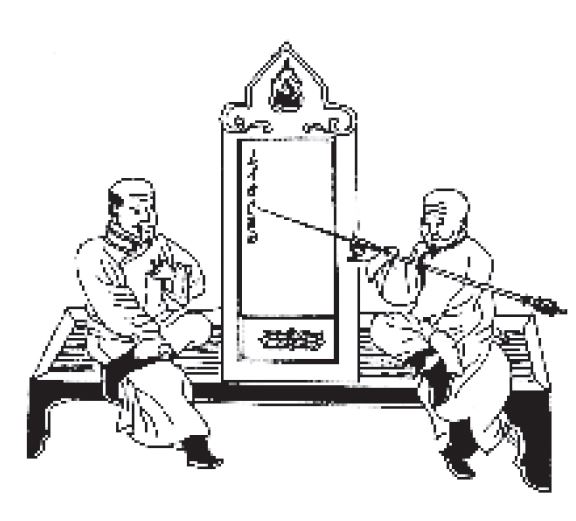Folk Arithmetic and Mathematic
The number of skins
Are the same as the sum of numbers multiplied;
The number of skins
Show the number of missed arrows.
Resolve this problem:
How many arrows have scored a hit?
How many skins were hit?
How many arrows missed their target?
Who can tell it?
If you resolve this problem by traditional methods, the number of scores is 12, the number of hit skins is 8, and the number of missed arrows is also 8. This problem demonstrates that the archer shoots not only visible things but also invisible things at his enemy. It means that the herder must
The oldman Yerentei has ninety nine sons and ninety nine sons have ninety nine sons. Ninety nine sons of ninety nine sons have nine sons each. Each nine sons of the ninety nine sons have three sons each and each three sons have two sons. Each two sons of each three sons have one son. How many sons shall be the total?The knowledge of arithmetic and mathematics were very popular among the Mongolians from an ancient time like another peoples. This could be divided into oral arithmetic and written mathematics. The Mongolian herders gather and relate epics and resolve various arithmetic problems and guesses, which sharpen their wit and expand the universal knowledge. Let’s take an example.
- There are 22 parallel burrows. There are also two foxes and 22 field voles. The two foxes said “Let’s play.” Each can enter the burrow one by one. The seventh numbered vole fills the orifice with earth. All voles agreed to this suggestion of the foxes. In which burrow the sly fox can enter without getting the number seven and eaten all the voles?
- A female sheep always bears a female lamb from its lambing age. Each of its offspring bears a female lamb when it reaches the proper age. What is the population of these sheep after ten years?
In oral arithmetic there is a system of calculating integers and fractions, pluses and minuses, as well as determining arithmetic terms. Let us take another example:
Good thumb archer,
Never misses the visible enemy;
All famous archers,
Never misses the invisible enemy;
By taking eight enemy soldiers
Who are hidden behind a spur,
Shot with twenty arrows
From twenty fathoms;
To the eight skins of the sheep,
Behind the pairs of eyes,
The number of shots
Are multiplied by two numbers;
calculate the degree of the penetration of the shots. This kind of mathematical knowledge is the root of traditional Mongolian mathematics. Mongolians received this knowledge from the Hünnü. They used it to build buildings, dig channels, calculate the calendar as well as to calculate the positions of the stars, durations of day and night, the timing of the four seasons, the date of the next eclipse of the sun and the moon, and the beginning of the spring (or vernal) and autumnal equinox.Another traditional method of mathematics is counting. There is a popular concept of counting:
The number is a good word,
But it expresses something endless;
The armour is good clothing,
But it is not for a wedding.
Our oral literature says so.
The Mongolians identify over 60-digit-numbers, and consider them as both practical and abstract numbers. These numbers have their roots in the ancient sutras from the eighteenth century.


